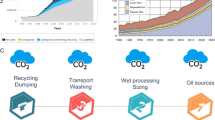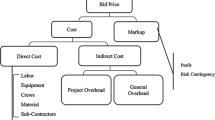Abstract
With the exception of a living place, the house is an asset which needs to be estimated the future price and possibility of being sold. Main purpose of this paper is to estimate the prediction of the selling possibility of houses. Selling possibility of apartments in every city depends on qualitative and quantitative characteristics of houses. The area of per sq. m., number of rooms, the distance from the city center, located floor in building, and some quality indicators as the repair, parquet, furniture, distance to metro station, availability of documents, equipment with natural gas, project type, etc. are explanatory variables of our model. Dependent variable of the model was called as G score. This score was coded “0” when the house has not been sold during the period; otherwise “1”. On the base of this database, we calculated G score and found that, if the computed G value is equal to or greater than 0.33, then the house is considered with high possibility of selling. If the score is less than 0.33; it is classified as low-selling chance or illiquid. This estimation instrument might be useful for real-estate brokers, commercial banks, or even financial market participants working with real-estate-based derivatives.

Similar content being viewed by others
Notes
This characteristic is very important in housing market in Baku, because most of houses which have been observed are located in new buildings do not have the official documents ownership (has only sale contract).
This test can be used to measure the predictive power of such models. The value of this test is as follows: \( K = \frac{{\sum f_{0} - \sum f_{e} }}{{N - \sum f_{e} }}, \) where k—the value of kappa test, \( \mathop \sum \nolimits f_{0} \)—sum of frequency on both observed classification, \( \mathop \sum \nolimits f_{e} \)—sum of frequencies on both expected classification, and N—size of observation. The computed value of Kappa test is examined within 6 (six) significance interval: \( k \le 0 \) (very small compliance), \( 0 < k \le 0.20 \) (small compliance), \( 0.21 < k \le 0.40 \) (acceptable compliance), \( 0.41 < k \le 0.60 \) (medium strong compliance), \( 0.61 < k \le 0.80 \) (significant compliance), and \( 0.81 < k \) (almost perfect compliance). We also found the application of this test in some papers which have been introduced by Cohen (1968), Kraemer (1980), Sprcic et al. (2013).
References
Abbasov, J. A. (2014). Hedonic price method for housing. International Journal of Business and Social Research (IJBSR), 4(8), 8–16.
Abbasov, J. A. (2016). The prediction of the chance of selling of houses as the factor of financial stability. In Conference Proceedings (IEEE) on Application of Information and Communication Technologies, AICT 2016, Baku, Azerbaijan.
Arimah, B. C. (1992). An empirical analysis of the demand for housing attributes in a third world city. Land Economics, 68(4), 366–379.
Bartik, T. J. (1987). The estimation of demand parameters in hedonic price models. Journal of Political Economy, 95(1), 81–88.
Brown, J. N., & Rosen, H. S. (1982). On the estimation of structural hedonic price models. Econometrica, 50(3), 765–768.
Chattopadhyay, S. (1999). Estimating the demand for air quality: new evidence based on the Chicago housing market. Land Economics, 75(1), 22–38.
Cohen, J. (1960). A coefficient of agreement for nominal scales. Educational and Psychological Measurement, 20, 37–46.
Cohen, J. (1968). Weighted kappa: nominal scale agreement with provision for scale and disagreement or partial credit. Psychological Bulletin, 70, 213–220.
Colwell, P. F., & Dilmore, G. (1999). Who was first? An examination of an early Hedonic study. Land Economics, 75(4), 620–626.
Court, A. T. (1939). Hedonic price indexes with automotive examples in the dynamics of automobile demand. New York: General Motors.
Engström, G., & Gren, A. (2017). Capturing the value of green space in urban parks in a sustainable urban planning and design context pros and cons of hedonic pricing. Ecology and Society, 22(2), 21.
Epple, D. (1987). Hedonic prices and implicit markets: estimating demand and supply functions for differentiated products. Journal of Political Economy, 95(1), 59–80.
Fallis, G., & Smith, L. B. (1985). Price effects of rent control on controlled and uncontrolled rental housing in Toronto: A Hedonic Index approach. The Canadian Journal of Economics, 18(3), 476 652–659.
Griliches, Z. (1961) Hedonic price indexes for automobiles: An econometric of quality change. In The Price Statistics of the Federal Goverment. National Bureau of Economic Research, pp. 173–196.
Gujarati, D. N. (1995). Basic econometrics (3rd ed.). New York: McGraw-Hill Inc.
Haan, J., & Diewert, W. E. (2013). Handbook on residential property price indexes. Luxembourg: Eurostat.
Ham, C., Champ, P. A., Loomis, J. B., & Reich, R. M. (2012). Accounting for heterogeneity of public lands in hedonic property models. Land Economics, 88(3), 444–456.
Haas, G. C. (1922). A Statistical Analysis of Farm Sales in Blue Earth County, Minnesota, as a Basis for Farm Land Appraisal. Masters thesis, the University of Minnesota.
Hill, R. (2011). Hedonic Price Indexes for Housing, OECD statistics working papers, 2011/01. Paris: OECD Publishing.
Hill, R. J., & Scholz, M. (2014). Incorporating geospatial data in house price indexes: A hedonic imputation approach with splines, Graz Economics Papers 2014–05. Graz: Department of Economics, University of Graz.
Holm, A., Ejrnæs, M., & Karlson, K. B. (2015). Comparing linear probability model coefficients across groups. Quality and Quantity, 49(5), 1823–1834. https://doi.org/10.1007/s11135-014-0057-0.
Kim, S. (1992). Search, hedonic prices and housing demand. The Review of Economics and Statistics, 74(3), 503–508.
Kraemer, H. C. (1980). Extension of the kappa coefficient. Biometrics, 36(2), 207–216.
Landry, C. E., & Hindsley, P. (2011). Valuing beach quality with hedonic property models. Land Economics, 87(1), 92–108.
Noland, C. W. (1979). Assessing hedonic indexes for housing. The Journal of Financial and Quantitative Analysis, 14(4), 783–800.
Palmquist, R. B. (1984). Estimating the demand for the characteristics of housing. The Review of Economics and Statistics, 66(3), 394–404.
Polinsky, A. M. (1977). The demand for housing: A study in specification and grouping. Econometrica, 45(2), 447–461.
Sprcic, M. D., Klepac, M., & Suman, P. (2013). The applicability of the Edmister model for the assessment of credit risk in Croatian SMEs. UTMS Journal of Economics, 4(2), 163–174.
Tinbergen, J. (1951). Some remarks on the distribution of labour incomes. International Economic Papers, 1, 195–207.
Waugh, F. V. (1928). Quality factors influencing vegetable prices. Journal of Farm Economics, 10(2), 185–196.
Wooldridge, J. M. (2000). Introductory econometrics: A modern approach. Mason: South-Western College Publishing.
Yau, Y. (2015). The value of building safety: A hedonic price approach. Urbani Izziv, 26(1), 92–104.
Acknowledgements
I would like to thank Mr. Elchin Gulaliyev and Mr. Murad Yusifov (Economists at the Central Bank of Azerbaijan) for their editorial support.
Author information
Authors and Affiliations
Corresponding author
Ethics declarations
Conflict of interest
On behalf of all authors, the corresponding author states that there is no conflict of interest.
Rights and permissions
About this article
Cite this article
Abbasov, J. The estimation of selling possibility of houses. Asian J Civ Eng 19, 827–837 (2018). https://doi.org/10.1007/s42107-018-0066-8
Received:
Accepted:
Published:
Issue Date:
DOI: https://doi.org/10.1007/s42107-018-0066-8





